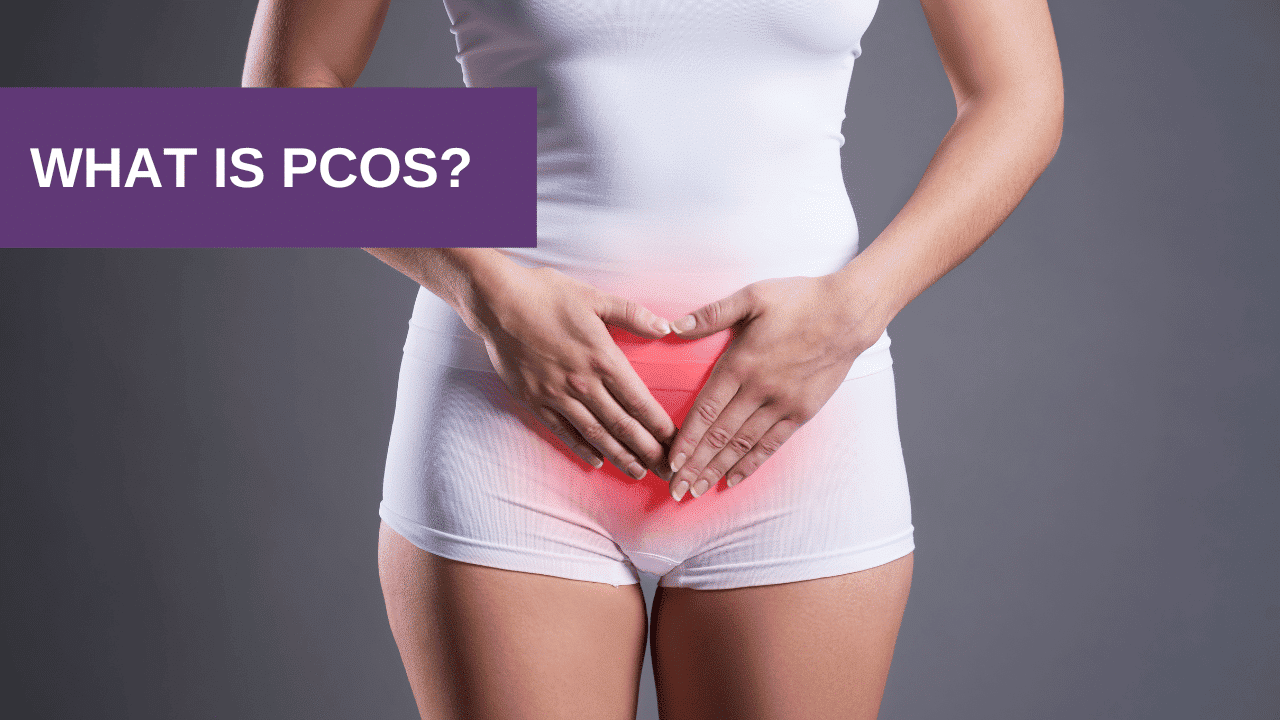Polycystic ovary syndrome (PCOS) is a hormonal disorder that affects 10% of women of reproductive age. Polycystic ovary syndrome is characterized by high male hormone levels and low progesterone levels, which leaves estrogen unopposed.
Usually PCOS is first diagnosed in young women.Bbut can be missed early in life and not diagnosed until you’re premenopausal.
PCOS was first named in 1935 by Stein and Leventhal. However, in 1721 Vallisneri, an Italian scientist, described a married, infertile woman with shiny ovaries with a white surface, and the size of pigeon eggs.
So, PCOS is not a new disorder.
Yet polycystic ovary syndrome is rather a misnomer.
While it was first noted in women with many cysts on their ovaries, their hormonal imbalance was believed to be derived from the cystic ovaries. But that is not the case.
The hormonal imbalance in polycystic ovary syndrome derives from the hypothalamus.
Your hypothalamus controls all of your sex hormones and your adrenal hormones, as well as all the rest of the hormones in your body. It also controls your inflammation, or the inflammatory markers in your body.
PCOS is characterized by high male hormones both testosterone and DHEA as well as high inflammatory markers. Women with polycystic ovary syndrome may have insulin resistance, which causes metabolic inflammation. polycystic ovary syndrome is a metabolic disease of young women and metabolic diseases originate in the hypothalamus.
When your hypothalamus becomes out of balance, due to high stress, poor nutrition, and toxins, you can develop metabolic issues like polycystic ovary syndrome. Your adrenal glands produce stress hormones, including DHEA.
High levels of stress can be one of the risk factors of developing polycystic ovary syndrome.
Another risk factor for developing polycystic ovary syndrome is familial. We’re not sure if this is hereditary, or if it runs in the family because of behavior. But if your mother or sisters had polycystic ovary syndrome, and oftentimes your mother may not have been diagnosed. they just had infertility issues, maybe early miscarriages, maybe trouble with facial hair, maybe central obesity which is classic in PCOS, then you are more likely to develop polycystic ovary syndrome.
Environmental exposures like to xenoestroegens and endocrine disrupters affect your genetics and may contribute to developing PCOS.
Women with PCOS may have infrequent or prolonged menstrual periods and excess male hormone (androgen) levels. Their ovaries may develop numerous follicles which fill with fluid and become cysts. Women with PCOS do not ovulate regularly and may be infertile or have difficulty getting pregnant or miscarry early.
One-third of women with PCOS also have features of metabolic syndrome, including insulin resistance, obesity, and dyslipidemia.
It’s insulin resistance which inhibits your liver’s ability to produce sex hormone-binding globulin (SHBG). SHBG keeps your testosterone levels in check.
Insulin resistance stimulates ovarian and adrenal androgen secretion.
Dysfunctional white adipose tissue has been identified as a major contributing factor for insulin resistance in PCOS.
Women tend to accumulate white adipose tissue in gynoid distribution- hips, buttocks and thighs. Where women with PCOS gain fat in the android distribution around the abdomen. This dysfunctional white adipose tissue seen in PCOS increases the risk of developing type 2 diabetes and cardiovascular disease.
While some women with polycystic ovary syndrome have multiple cysts on her ovaries due to lack of ovulation and increased follicle stimulation. Cystic ovaries are often caused by a hypothalamic pituitary ovarian imbalance.
The high androgens in PCOS are caused by a hypothalamic-pituitary-adrenal imbalance.
High stress revs up your adrenal glands and increases the output of DHEA which gets converted into into testosterone. High stress will interfere with your fertility, which will decrease your likelihood of ovulation which results in low progesterone.
Lower progesterone levels, which have a calming effect and an anti-inflammatory effect in the body, are characteristic in polycystic ovary syndrome. Without ovulating and lowering the inflammation every month with adequate production of progesterone, you can develop multiple cysts on your ovaries follicles that continue to get stimulated by high levels of follicle stimulating hormone, which puts your estrogen to progesterone ratio off creating estrogen dominance. And those follicles eventually develop into theca cells, which produce high levels of testosterone.
While polycystic ovary syndrome is considered a medical diagnosis, and is treated by allopathic physicians with medications, there are more natural ways to treat polycystic ovary syndrome that allow you to be able to have a return of your fertility, normalization of your periods and balancing of your hypothalamic pituitary adrenal axis which will lower your inflammation.
If you want to learn more about PCOS, please join my free Hormone Reboot Training.
Reference: The Polycystic Ovary Syndrome and the Metabolic Syndrome: A Possible Chronobiotic-Cytoprotective Adjuvant Therapy, International Journal of Endocrinology https://www.hindawi.com/journals/ije/2018/1349868/



0 Comments